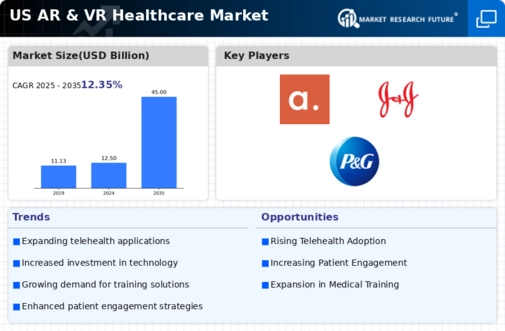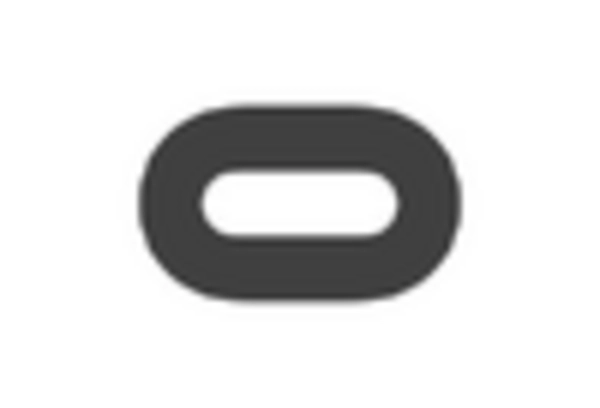Technological Advancements in AR VR
The rapid evolution of technology plays a pivotal role in the ar vr-in-healthcare market. Innovations in hardware and software, such as improved graphics, processing power, and user interfaces, enhance the effectiveness of AR and VR applications. For instance, the integration of artificial intelligence with AR VR technologies allows for more personalized patient experiences and better training simulations. The market is projected to reach approximately $10 billion by 2026, indicating a compound annual growth rate (CAGR) of around 30%. This growth is driven by the increasing adoption of AR VR solutions in surgical training, rehabilitation, and patient education, thereby transforming traditional healthcare practices.
Rising Awareness of Mental Health Solutions
The rising awareness of mental health issues is a notable driver for the ar vr-in-healthcare market. As society becomes more attuned to the importance of mental well-being, there is a growing demand for effective therapeutic solutions. AR and VR technologies are being utilized in various mental health applications, including exposure therapy and stress management. The mental health market is expected to reach $240 billion by 2026, with AR VR solutions playing a crucial role in addressing these needs. This trend highlights the potential of immersive technologies to provide innovative and effective treatment options for mental health conditions.
Growing Demand for Remote Patient Monitoring
The demand for remote patient monitoring is a crucial factor influencing the ar vr-in-healthcare market. As healthcare systems seek to improve patient outcomes while managing costs, AR and VR technologies offer innovative solutions for monitoring and engaging patients outside traditional clinical settings. The market for remote patient monitoring is projected to grow at a CAGR of 25% through 2027, driven by the need for continuous care and real-time data collection. AR VR applications can enhance patient education and adherence to treatment plans, thereby improving overall health management. This trend indicates a shift towards more patient-centered care models.
Increased Investment in Healthcare Technology
Investment in healthcare technology is a significant driver for the ar vr-in-healthcare market. Venture capital funding and government grants are increasingly directed towards innovative healthcare solutions, including AR and VR applications. In 2025, investments in healthcare technology are expected to exceed $200 billion, with a notable portion allocated to immersive technologies. This influx of capital enables the development of advanced AR VR tools that improve surgical precision, enhance medical training, and facilitate patient engagement. As healthcare providers recognize the potential of these technologies to improve outcomes and reduce costs, the market is likely to experience sustained growth.
Regulatory Support for Innovative Technologies
Regulatory support for innovative technologies significantly impacts the ar vr-in-healthcare market. Government agencies are increasingly recognizing the potential of AR and VR applications to enhance healthcare delivery. Initiatives aimed at streamlining the approval process for medical devices and software are encouraging the adoption of these technologies. In 2025, the FDA has introduced guidelines that facilitate the development and deployment of AR VR solutions in clinical settings. This regulatory environment fosters innovation and encourages healthcare providers to integrate immersive technologies into their practices, thereby driving market growth.

















Leave a Comment